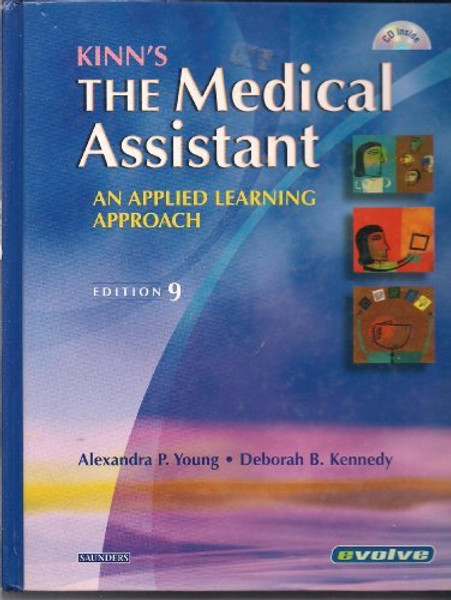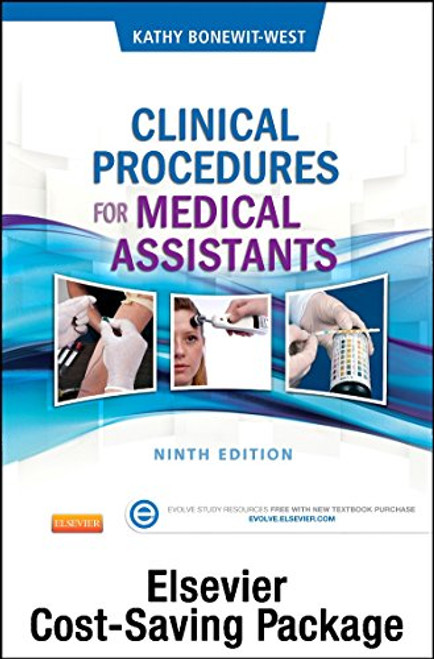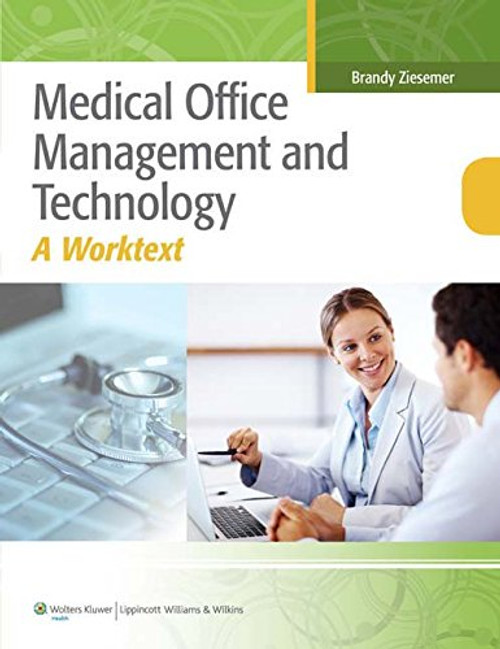Product Overview
This leading, well-established textbook covers the administrative and clinical skills all medical assistants need to know, integrating all of the topics and skills competencies required by the AAMA entry-level Medical Assisting Curriculum. It features chapter outlines and learning objectives as well as relevant material dealing with personal qualities, skills, responsibilities, types of patient education, and legal and ethical issues. The unique Kinn approach - teaching essential skills alongside the medical specialty context - is the signature feature of this book. In addition, the 9th edition introduces a new applied learning approach that focuses on a real-world context for skills and requires the student to apply theory and skills to various case studies throughout the chapters. Real-life examples, quizzes and answers, and two accompanying interactive CD-ROMs packaged with the book help students retain and apply what they learn.
- Clinical specialty chapters follow a template for reviewing A&P, medical terminology, pathology of the specialty, how to deal with patients in that specialty, relevant drugs, and lab and administrative concepts.
- Major websites relating to the chapter are included to direct students to additional information on the Internet as well as current business news and medical industry developments.
- A full three-chapter unit, with drug information interspersed in the appropriate medical specialty chapters, allows a significant emphasis on pharmacology, including dosage calculations and drug types in the context of specific medical specialties.
- Student Skills chapters (Chapters 1 & 55) present skills for time management, learning styles, and study skills, while providing externship advice and preparation, lifelong learning options, CEUs, resume building, certification test preparation, and more.
- National Curriculum Competencies covered in each chapter help students focus on what is required for certification and familiarizes them with the official language of the curriculum.
- Charting examples are provided for all procedures, illustrating proper documentation in the patient record and reinforcing the importance of accurate charting for communicating information and legally protecting the practice.
- An accompanying 2-disk CD-ROM component continues the applied learning approach with interactive clinical skills, Lytec computer front office simulations, The Body Spectrum, and CMS forms completion software.
- New ECG chapter (Chapter 46) integrates content formerly in the cardiology chapter enables the student to focus on skills related solely to ECG, making the information easier to grasp.
- New endocrinology chapter (Chapter 42) presents all-new material on conditions that affect patients with endocrine disorders.
- Two new coding chapters (Chapters 15 & 16) separate coding information into two distinct chapters for increased focus on this essential administrative skill, presenting sufficient background to get started in this area.
- Revised organization more closely aligns the book's progression with the AAMA and RMA curricula, grouping topics together more logically.
- Critical thinking applications are incorporated throughout the chapters, indicated with a specific icon, designed to tie-in the chapter-opening scenario and encourage students to make decisions about a real-life situation.
- Transdisciplinary themes are introduced in an applied context - legal/ethical, communication, professionalism, patient education, and office management - woven throughout the chapters, in scenarios, and in critical thinking applications.
- Administrative concepts - medical codes, telephone triage, protocols, documentation, etc. - that apply to various diseases and conditions are integrated into their applied clinical context.
- Increased emphasis on medical terminology features a vocabulary spelling and terminology review in the Student Study Guide and bolded words within the chapter to reinforce medical terminology in context.
- Expanded sections on medical terminology, A&P, and pathophysiology, plus more emphasis on pharmacology, make the book more comprehensive and inclusive.
- More emphasis on pathophysiology and a better review of anatomy and physiology meets curriculum requirements in pathophysiology and provide more real-world application of common diseases and conditions, while the revised A&P review provides a better framework for understanding pathological system conditions.
- Figures have been revised, replaced, and augmented to accurately reflect the current medical office environment and provide clearer graphics, more images of equipment, more disease examples, and better illustration of key procedural steps.
- Many new chapter features, including an all-new interior design, tighter focus, new color palette, and fresh icons enliven this edition and make information easy to follow.
- Applied-learning approach features a scenario at the beginning of each chapter suited to that chapter's focus, which is summarized at the chapter's end - centering on a fictional MA who needs to make decisions and address critical issues - to help students develop sound critical thinking and decision-making skills.



![Kinn's The Medical Assistant An Applied Learning Approach [Procedure Checklists Manual] [2014] Kinn's The Medical Assistant An Applied Learning Approach [Procedure Checklists Manual] [2014]](https://cdn11.bigcommerce.com/s-g9mehhprbl/images/stencil/500x659/products/354218/670409/51s4gp5%252BxmL__11329.1699792641.jpg?c=1)



